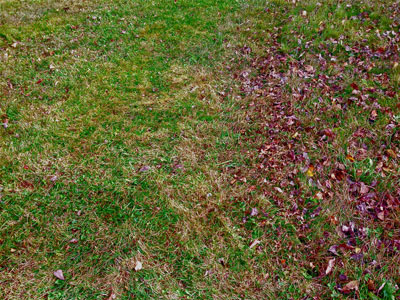By C.J. Walke
Update: Arctic® Apples
In the spring 2014 issue of The MOF&G, I wrote about the genetically engineered, non-browning Arctic® apples, created by Okanagan Specialty Fruits Inc. of Summerland, British Columbia. Arctic apples are engineered to resist enzymatic browning when sliced or bruised, which proponents claim will make apples more appealing to consumers (kids especially), improve healthy food options from school cafeterias to fast food restaurants, and potentially reduce obesity in America. In February 2015, the USDA approved the commercial planting of Arctic® Granny and Arctic® Golden trees, stating that these genetically engineered crops posed no risk to human health, environmental health or the cultivation of other food crops.
This past spring, the first Arctic® apples were planted on nearly 50 total acres in the Pacific Northwest and the Mid-Atlantic. Growers expect to harvest an estimated 5,000 to 10,000 pounds of these apples in the fall of 2016, with plans to supply food service companies and other buyers in the test market. The apples could reach select grocery store shelves by the fall of 2017, with wider availability in 2018.
Also this past spring, Okanagan Specialty Fruits Inc. was acquired by Intrexon Corporation, a leader in synthetic biology, for $10 million in cash and $31 million in Intrexon common stock. According to an Intrexon press release, “OSF’s vision and ground-breaking effort in responsibly harnessing the power of technology to produce wholesome, nutritious food that is more appetizing and convenient to consumers is aligned with Intrexon’s strategy in the Food sector. The combination of the talented OSF team under the continued leadership of Neal Carter, OSF Founder and President, and Intrexon’s technology platform opens the door to novel, designer foods that support the evolving healthy diet choices of today’s consumer.” (https://investors.dna.com/2015-04-20-Intrexon-Completes-Acquisition-of-Okanagan-Specialty-Fruits).
As I noted in my 2014 column, opponents of these varieties cite similar concerns as expressed for all organisms being genetically engineered for the marketplace, such as potential cross-contamination from pollen, unknown impacts on the environment and human health, and insufficient testing conducted over short periods of time.
Consumers who want to avoid eating genetically engineered apples can buy local, certified-organic apples.
 |
| Mowing fallen leaves in late fall breaks them up and hastens decomposition, limiting sources of pathogenic fungi. Photo by C. J. Walke |
Fall Tasks for Disease Prevention
Fall is the ideal time to get a jump on tree fruit diseases that lie in wait over winter and are ready to strike at the first sign of green tissue in early spring. Every June I receive numerous calls and emails from growers about peach leaf curl, a fungal disease that affects peach and nectarine leaves, creating reddish lesions that crinkle and curl the leaf into shapes that resemble aphid damage on young tree shoots, but the reddish lesions are the telltale sign. Spores overwinter on the tree and wash into bud scales with spring rains, and once infected, no treatment – even with synthetic fungicides – is effective. The best approach is to use an organic sulfur product when leaves are 90 percent off the tree in the fall. If infections are heavy, a second dose in early spring, before bud break, will deal a second blow to spores.
Orchard sanitation or fall cleanup also effectively reduces the presence of over-wintering diseases on the orchard floor or in the tree canopy. Always remove drops and mummies (shriveled, mummified fruit) from the orchard, especially if you know you had strong fungal disease pressures during the growing season. Apple scab overwinters on infected leaves and fruit, so removing those sources of infection is essential and effectively reduces the presence of brown rot in stone fruit.
Other than removal and disposal of obvious sources of infection on fruit, fallen leaves – especially apple leaves – can be managed by mowing in late fall to help break up leaves and hasten decomposition to limit sources of pathogenic fungi. Lime or nitrogen sources, and even compost, will help speed the decomposition of infected leaves, but nothing works as well as good coverage with a push mower or tractor mower. Planting apple scab-resistant varieties, such as ‘William’s Pride’, ‘Liberty’ or ‘Gold Rush’, will also help considerably in reducing fungal pressures in your orchard.
The attached photo shows the grass aisle between two rows of apples in the MOFGA orchard, taken when I was mowing in early November. The collection of fallen apple leaves is clear on the right side of the photo, while the left shows the nicely mowed orchard floor, with very little leaf litter. I also try to time a first spring mowing in the orchard for early May, before apple bloom, to shred remaining leaves as ascospores are maturing and waiting for conditions to be right for the first window of primary infection, usually around bloom.
Sources of information about Arctic® apples
“Genetically Engineered Arctic Apples – Coming to a Store Near You?” by C.J. Walke, The Maine Organic Farmer & Gardener, Spring 2014; https://www.mofga.org/Publications/MaineOrganicFarmerGardener/Spring2014/ArcticApples/tabid/2759/Default.aspx
“US: Commercial nonbrowning apples planted,” by Kayleigh Csaszar, Fresh Plaza, June 18, 2015;
https://www.freshplaza.com/article/141633/US-Commercial-nonbrowning-apples-planted
“Gene-Altered Apples Get U.S. Approval,” by Andrew Pollack, The New York Times, Feb. 13, 2015;
https://www.nytimes.com/2015/02/14/business/gmo-apples-are-approved-for-growing-in-us.html
“Intrexon to Acquire Okanagan Specialty Fruits,” Reuters, Feb. 27, 2015;
https://www.reuters.com/article/2015/02/27/intrexon-acquires-idUSnPn9VW7BR+9b+PRN20150227
